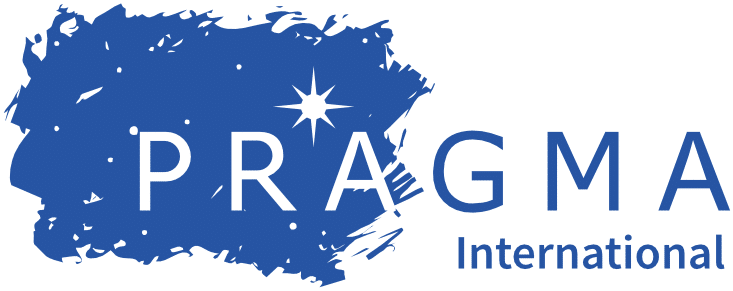By Olivia Dalton (Lawyer), Christina McElwain (Senior Associate) and Kate Landells (Principal Solicitor)
Aside from the severe health crisis coronavirus has caused, it has also crippled the economy and people’s livelihoods. Many financially strong and viable Australian businesses are having to deal with these unanticipated circumstances, resulting in their trade coming to a standstill through no fault of their own.
One of the hardest hit sectors are small to medium sized enterprises (or SMEs). With the temporary insolvency measures offered to businesses and individuals set to expire on 31 December 2020, and the discontinuation of JobKeeper in March 2021, the number of companies being put into external administration is expected to rise.
To combat this the Federal Government is making some of the most significant changes to the Australian insolvency laws in almost 30 years. These reforms will come into effect on 1 January 2021 and are designed to support SMEs by reducing the complexity, time and costs associated with restructuring and dealing with financial distress.
If you are an owner, creditor or advisor of an SME it is critical that you are aware of these reforms and how they may offer vital support.
What are the reforms?
The reform package features 3 key elements that aim to shake up the current “one-size fits all” insolvency regime in Australia:
- A new formal debt restructuring process that adopts a debtor in possession model.
- Simplified liquidation pathway for SMEs to allow faster and lower cost liquidation.
- Temporary restructuring process for businesses to obtain interim relief.
The reform framework is currently set out in the draft primary legislation called the Corporations Amendment (Corporate Insolvency Reforms ) Bill 2020 (the Insolvency Reforms Bill). On 17 November, the Government also released the Corporations Amendment (Corporate Insolvency Reforms) Regulations 2020 (Cth) (Regulations), being the subordinate legislation that will govern and support the operation of the SME restructuring and liquidation process set out in the Insolvency Reforms Bill. These Regulations with amend the Corporations Regulations 2001. The public consultation period for the subordinate legislation just expired on 24 November 2020.
The draft legislation underpinning the reforms has developed rapidly in order to respond to the coronavirus. The reform framework is therefore not set in stone and may be subject to further modifications post the Government’s considerations of the submissions made through the consultation process. The below overview is based on the reforms as they are currently drafted.
How do they work?
New restructuring process
Suitable for SMEs with debts less than $1million which have a chance of trading out of debts
- This process is available to incorporated businesses with liabilities of less than $1 million and is designed to provide a faster and less complex mechanism for businesses to restructure their affairs and existing debts. The Regulations prescribe that these total liabilities need to not exceed $1 million at the date the restructuring begins. These liabilities do not include contingent liabilities.
- Unlike a rigid administration regime, this new process works like a debtor in possession model. This means that the company can continue operating under the control of its directors (the people who know the business) while, for a period of 20 business days, a debt restructuring plan is developed behind the scenes.
- The debt restructuring plan is then presented to creditors for their approval.
- The plan will be developed by the business owner together with an independent small business restructuring practitioner (SBRP). This practitioner has a function much like an administrator but more agile and hopefully less expensive.
There is a significant barrier to entry to this process that SMEs should be aware of. The plan can only be put to creditors if all of the company’s tax lodgements and employee entitlements are up to date. Importantly, all due and payable employee entitlements must be paid (other than contingent entitlements) which include wages, superannuation contributions, retrenchment payments and injury compensation amounts.
A high-level snapshot of how this process works is set out below:
- A SME in financial difficulty will approach a SBRP to go through their options.
- The SBRP determines the company’s eligibility for the process.
- SBRP is appointed and notice of appointment is provided to creditors.
- Directors continue with everyday company trading.
- The SBRP reviews the SMEs financial affairs and develops a plan (within 20 business days of SBRP appointment).
- The SBRP certifies the plan to creditors.
- Creditors will then be able to vote on the plan and verify proof of debt through an online portal. Approval requires a majority of unrelated creditors by value who respond by deadline (15 business days).
- If a majority of creditors vote for the reorganisation plan, the plan commences and the practitioner is appointed to oversee the plan.
- However, if a majority of creditors vote against the reorganisation plan, the process ends and the directors may choose to enter another insolvency process.
- Once the plan is in place, the practitioner will manage disbursements (without having to take on personal liability for the company, or be involved in its day to day management).
Secured creditors will only be bound by the restructuring plan to the extent the agree to be bound and to the extent that their claim exceeds the value of their security interest.
What safeguards are there against misuse of the new safeguards?
As always, the introduction of new law carries the risk of illegal activity or misuse of the legislation.
Safeguards will be included to prevent the process from being used to facilitate corporate misconduct such as illegal phoenix activity. They include a prohibition on related creditors voting on a restructuring plan, a bar on the same company or directors using the process more than once within a prescribed period (proposed at 7 years), and the provision of a power for the practitioner to stop the process where misconduct is identified.
Simplified liquidation pathway
Suitable for SMEs whose business is not salvageable with debts less than $1million
The External administration of companies is one of the most highly regulated processes in Australia. As a result, administration can be very expensive and therefore better suited to large scale complex company collapses.
These reforms will provide a simplified liquidation process tailored for SMEs with non-contingent liabilities less than $1 million to make it more efficient and cost effective. It will retain the general framework of the current liquidation regime but with modifications to the rules and formalities around the timing and costs of the liquidation, which reflect the size of the assets and risk profile of the SME.
Modifications include:
- Narrowing the situations where liquidators can claw back unfair preference claims. The Regulations provide that liquidators cannot seek to recover a preference claim against unsecured creditors of the company (subject to the simplified liquidation process) who are unrelated and have recovered preferential payments of no more than $30,000 in value.
- Simplifying the dividend and proof of debt process.
- Removing requirements to convene creditor meetings.
- Only requiring the liquidator to report to ASIC if there has been misconduct.
- Heavier reliance and use of technology for voting and other communications.
It is intended that these changes will result in time and cost savings, meaning there is more value for creditors and employees.
The modifications do not affect secured creditors’ rights and payment of priority creditors (such as employees) under the Act will also not be modified.
How do I register my intention for the restructuring plan ?
SMEs will be able to declare their intention to access the simplified restructuring process to its creditors, including through ASIC’s published notices website.
Following the declaration, the existing temporary insolvency relief (namely, relief from insolvent trading liability and the extensions for responding to statutory demands from creditors) would then apply to the business for a maximum period of 3 months, until they are able to access a SBRP or other insolvency practitioner. Relief would only apply to an individual business once a declaration is made.
As a transitional measure, the ability to declare such an intention will be available until 31 March 2020.
Larger and more complex businesses, as well as small businesses seeking more flexibility in how they may restructure, can continue to use voluntary administration.
What now?
Although taking action quickly may seem like the best strategy (and in some cases it is), taking the time to understand the process involved and consider all potential avenues is an important first step. We believe appropriate due diligence is essential before utilising the new legislative measures to ensure that you and your business take the most effective route.
If you need assistance with understanding how the reforms apply to you or your business and what other options there may be, contact us for an obligation-free chat.
This article was written by Kate Landells (Principal Solicitor).








